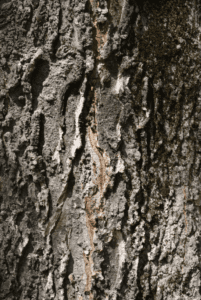Notable Natives: The Hackberry (Wait, What?) Tree
By Su Fiske, Inland Bays Garden Center | Special to the Coastal Point Jan 26, 2023

Coastal Point • Stock photo
Since I am all about that bark, ’bout that bark, the hackberry does not disappoint. Our native hackberries (common hackberry, or Celtis occidentalis) have the most interesting dark and craggy bark. Then, to top it off, they have their own butterfly, hackberry emperors (which, oddly enough, think human sweat is a great food).
The hackberry, with its hanging fruit, is one of the most important sources of food for everything from caterpillars to migrating winter and local birds. The nuthatch even uses the hackberry’s craggy bark to store seeds and suet in for winter. The hackberry is also called nettletree, beaverwood and sugarberry. This craggy bark is home to numerous little creatures.
Their corky type of bark makes them easy to identify, and their wood is flexible and strong, which makes it a great coastal tree, especially around here, with our winds. The hackberry is suited to both street and yard planting, since it tolerates pollution found in urban areas.
The tree grows to about 60 feet tall and has yellow-green leaves in the fall. The hackberry should be planted in full sun or part shade, and does not need any special soil but will grow slower in dry sites.
As a fast grower and hardy tree, the hackberry is a great pick for a shade tree, especially since it has deep roots so one does not have to worry about hardscaping being lifted, does not require watering, tolerates flooding and salt, or for windbreak and as erosion control.
Besides the bark, the hackberry impresses me because it has at least five species of butterflies that depend on the tree for survival. These are mourning cloak and question mark, whose caterpillars eat the leaves, and the american snout, tawny, and hackberry emperor. The first two overwinter as adults and will look for food on warmer winter days.
The other three will be seen in the spring and summer around the hackberry, munching on the leaves, as they are species specific to this tree. This means that if there are no hackberry leaves to eat, there will be no American snouts, tawny or hackberry emperor caterpillars. There are other species that need the hackberry, such as the IO caterpillar, and white-marked and banded tussock caterpillars, which are moths as adults. Also, attracted by the hackberry is the Leila empress butterfly.
The fruit of the hackberry — clusters of dark berries called drupes — provide food to many species of birds. Although the fruit ripens in the fall, some remain on the tree through the winter, to the delight of the mockingbirds, cardinals, pileated woodpeckers, cedar waxwings, brown thrashers, robins, and wood ducks. Their high sugar content with low water content slows down their spoiling process.
Wildlife value:
• This tree has fruit that is important for birds to overwinter
• The cavities formed as the tree ages that provide habitats for wildlife and fungi, and a plethora of insects
• Even the box turtles like the fruit
Fun facts:
• The wood from the hackberry was used to make barrel hoops, wood flooring, pallets, furniture and sporting goods
• The hackberry is a good species for bonsai
• Humans can eat the hackberries — they taste like dates
• Native Americans used the hackberry as a source of food, with the berries crushed for seasoning or flavor, mixed with corn for porridge for medicinal purposes, made into cakes for winter storage, and the wood for prayer ceremonies
• The hackberry is believed to be one of the oldest known plant foods consumed by humankind. “The berries were also one of the most common plant remains found at the Meadowcroft Rock Shelter site in Pennsylvania.” (“The Humble hackberry Tree”) “Archaeologists estimate the site was occupied by hunter-gatherers as far back as 16,000 years ago.”
• Colonists called it the hagberry
• You can make hackberry no-bake cookies or hackberry milk
Read the article in the Coastal Point here.
